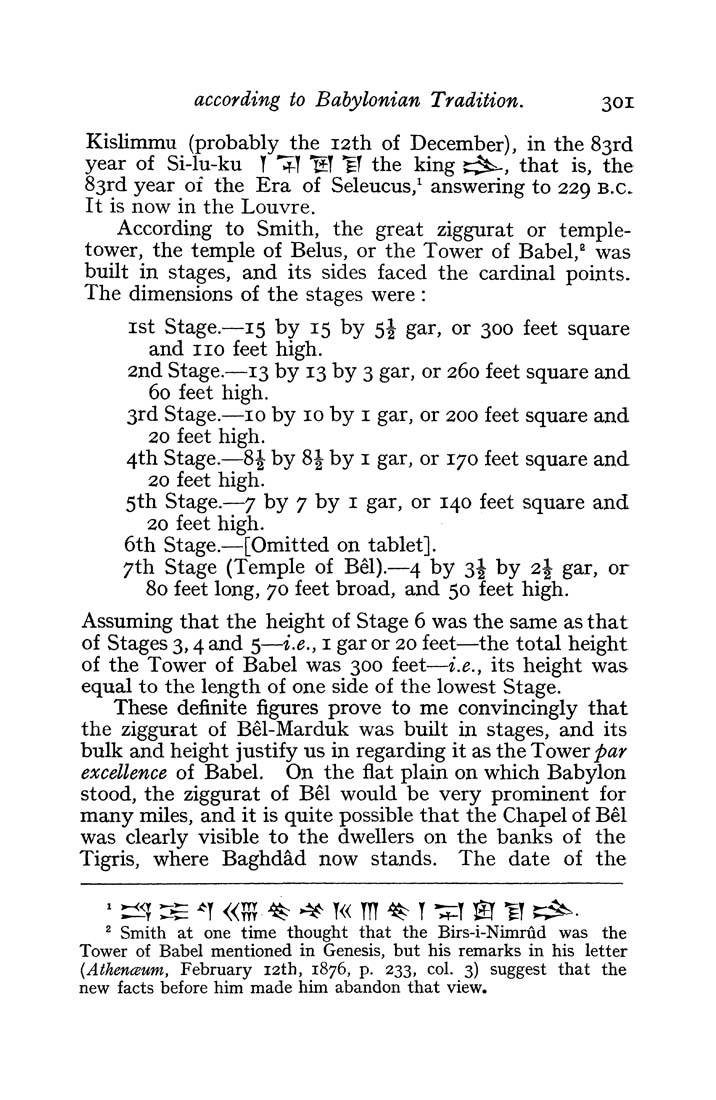according to Babylonian Tradition. 301
Kislimmu (probably the 12th of December), in the 83rd
year of Si-lu-ku y "^^y IS *^1 the king j^, that is, the
83rd year of the Era of Seleucus,^ answering to 229 B.C.
It is now in the Louvre.
According to Smith, the great ziggurat or temple-
tower, the temple of Belus, or the Tower of Babel,^ was
built in stages, and its sides faced the cardinal points.
The dimensions of the stages were:
ist Stage.—15 by 15 by 5| gar, or 300 feet square
and no feet high.
2nd Stage.—13 by 13 by 3 gar, or 260 feet square and
60 feet high.
3rd Stage.—10 by 10 by i gar, or 200 feet square and
20 feet high.
4th Stage.—8| by 8| by i gar, or 170 feet square and
20 feet high.
5th Stage.—7 by 7 by I gar, or 140 feet square and
20 feet high.
6th Stage.—[Omitted on tablet].
7th Stage (Temple of Bel).—4 by 3| by 2| gar, or
80 feet long, 70 feet broad, and 50 feet high.
Assuming that the height of Stage 6 was the same as that
of Stages 3,4 and 5—i.e., i gar or 20 feet—the total height
of the Tower of Babel was 300 feet—i.e., its height was
equal to the length of one side of the lowest Stage.
These definite figures prove to me convincingly that
the ziggurat of Bel-Marduk was built in stages, and its
bulk and height justify us in regarding it as the Towev par
excellence of Babel. On the flat plain on which Babylon
stood, the ziggurat of Bel would be very prominent for
many miles, and it is quite possible that the Chapel of Bel
was clearly visible to the dwellers on the banks of the
Tigris, where Baghdad now stands. The date of the
' t^'i z^ ^y «^~^ >^ y« yyy ^i^^mv j^-.
^ Smith at one time thought that the Birs-i-Nimrud was the
Tower of Babel mentioned in Genesis, but his remarks in his letter
{Athenceum, February 12th, 1876, p. 233, col. 3) suggest that the
new facts before him made him abandon that view.
|








